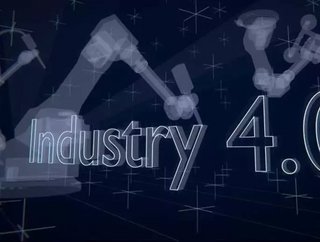How to succeed in the fourth industrial revolution in 2017

Headlines today are littered with references to ‘the fourth industrial revolution’, ‘artificial intelligence’, ‘machine learning’ and ‘big data’. While this hype isn’t unfounded, the practical ways of achieving value often remain unclear to the industry.
The bottom line is a primary concern for many manufacturers. Not without reason; many associate the fourth industrial revolution with further expenditure - instalment of new sensors to collect data, investment in data storage or perhaps in 3D printing equipment – rather than cost savings. Fortunately, the reality doesn’t always need not be this expensive. In fact, manufacturers are the ones most capable of achieving tangible value in a matter of months, with no capital investment, just simply by using machine learning for optimisation.
Relying on mathematical models
Using mathematical models to improve existing processes is not an innovative approach for manufacturers. In fact, with decades invested in this way of working, manufacturing is arguably one of the industries that does this best. Accustomed to the use of models in this way, manufacturers can simply ‘plug-in’ new technologies like AI to old processes, but deliver a transformative leap in quality.
Existing automation tools rely on knowledge-based models, built on physical equations or statistical analysis. Whilst they are precise enough, the analysis is still unable to fully reflect all of the complexities and uncertainties of real-world processes. Machine learning, on the other hand, can do just that. By analysing historical data of specific equipment or a given process, a model can learn to account for all fluctuations and deviations, and make better decisions to optimise the required KPIs. For example, the adjustment of unit parameters in real-time to decrease energy consumption while maintaining the output.
In practical terms, the ability to account for all hidden parameters and unknown patterns means an extra 5 to 10 percent in efficiency for a selected process. All without the need to change equipment, technology or teach the operators to deal with new controls, leaving them responsible for the outcome. For capital and energy intensive industries that have spent the last century on continuous improvements across the factory floor, this is indeed a breakthrough.
And here lies the reason why manufacturing is bound to lead in the AI revolution. Industrial companies inherently understand the value of optimisation, and already have in place many stable processes that have run for years without change. This is the best fuel for machine learning to showcase its power: thousands of examples to learn from, so that AI can go beyond existing models in its ability to predict future scenarios and prescribe the best action.
Collecting the low-hanging fruits
Despite predictive maintenance being hailed as the darling of machine learning use cases, the list of potential applications should not be limited by it. One example is virtual sensors which measure the unmeasurable and deduct the required properties based on available data. For example, estimating the temperature of a particular plate in a distillation column, which couldn’t otherwise be measured due to the absence of physical sensors.
Another application is the optimisation of processes where the decisions rely on the aforementioned physical models, and often require an experienced operator to make the final adjustment. For example, catalytic cracking in oil refining or ore beneficiation in mining, where there is a need to optimise the amount of catalysts or reagents used to maintain an output.
Finally, quality prediction. If potential defects can be foreseen, an optimal production route can be chosen to treat those, or a different grade of product made, to maximise the overall output and decrease costs.
Paving the way
Although the benefits of machine learning are evident, knowing where to start can be daunting.
First, AI needs data to learn from, and it doesn’t necessarily need to be “big”. While terabytes of real-time sensor data will come to play one day – existing gigabytes of logs and material records, organised or not, can perfectly work for the start. The longer the period of available data, the better. As a rule of a thumb, a few years is enough for regular or frequent processes.
Second, KPIs are key. Machine learning is clever, but it cannot choose the goals by itself, and will learn to optimise exactly what it is asked. There should, therefore, be a well-defined metric that can be measured directly during the model’s experimental period.
Third, and probably the most important factor, is the impact of the machine learning model. To start big, a manufacturer should choose the use cases where even incremental improvement will bring significant leverage. This will, of course, be dependent on the business type; for some, it would be the application of a machine learning model on an extremely expensive and complex piece of equipment, such as a blast furnace in steelmaking. For others, with quality fluctuations, machine learning is better applied to predicting defects on time. When chosen right, these new technologies can see businesses earn millions per year from a single process – without the typical risks associated with long-term investments.
Doing the same, but better
Mind-blowing innovative applications always get a lot of attention, but immediate revenue opportunities are rarely to be found in said applications. Artificial intelligence can help a manufacturing robot move smoothly and learn on the go, but building it and reinventing the production process will take years of effort. If manufacturers want to start taking advantage of the fourth industrial revolution in the immediate future, they should explore different use cases they know well. The key is to use new technology to do the same, just better.
By Jane Zavalishina, CEO of Yandex Data Factory






